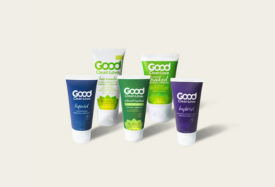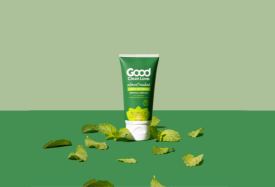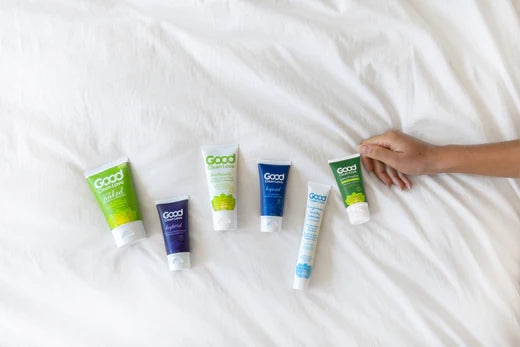Nelson Mandela might not have been talking about sex when he said “Education is the most powerful weapon you can use to change the world.” Yet, there may be no place in the human psyche that this is more true. Until we replace the burden of guilt and shame with the light of education, we will never be free from the darkness that distorts the truth and beauty of what it is to be a healthy sexual human. This work of sexual education belongs to all of us. The primary questions that we ask about being sexual remain the same throughout our lifetime; questions like:
- “Am I normal?”
- “What is true?”
- “Will it hurt me?”
These questions emerge with the first inklings of our sexuality and evolve as we mature. Giving ourselves – and the children we know – honest and developmentally appropriate answers to these questions early on is the basis on which we form our sexual identity. Developing a vocabulary based on real anatomical information is the beginning of having the language to express our sexual needs and desires. Teaching children developmentally appropriate language is the means by which we give them ownership of their own bodies, as well as the language to protect themselves against inappropriate touch. Giving children the words and support to speak up against inappropriate touch makes everyone safer.
Adults too, need and deserve an evolving sexual education. Even under the best of circumstances in a consensual relationship between loving adults, the power and complexity of our sexual drive can overcome and confuse us. Our deepest passions expose us to what is most raw and uncensored within us. Even after decades of sexual exploration with my husband, I sometimes find myself speechless about where our sexual selves have journeyed. We never stop growing up sexually.
For many of us, our early access to sexual health conversations become an obstacle that follows us long into our adulthood. Conversations that we avoid and subvert become shrouded with darkness and the longer they remain out of reach, the more distorted they become. So many topics including painful sex, the use of pornography and basics of sexual health infection rely on our capacity to talk about our sexual needs, desires, and overall health concerns. Each of these areas are ripe for increasing and expanding our knowledge and language.
Where Pleasure Is Unknown, So Is Consent
In the early childhood years when we learn who we are, boys have their body parts named while the female anatomy is often left unnamed – literally unspeakable. Even the most comprehensive sexual education only provides an overview of the female reproductive system with no mention of labia or the complex clitoral system. A boy’s education is characterized in terms of erections, ejaculation, and high powered sex drive, whereas a girls’ education is defined by the menstrual cycle and unwanted pregnancy.
What is the result of this uneven distribution of curriculum? And how does it play out in women’s lives? For one, young women are often using their partner’s physical pleasure as the yardstick for their own satisfaction. A staggering seventy percent of women report pain with sex when anal is included, but still blame themselves for not being able to relax. Not so for young American men who measure their satisfaction by their own orgasm.
How can young women know where the line of consent is when they have no experience or even expectation of their own pleasure? If everything is for their partner’s pleasure and conversations about contraceptive and disease prevention are too uncomfortable to be had, how do we teach consent? To the degree that we shame our sexuality into hiding and the curious are led by fictitious and often hurtful imagery of human sexuality, consensual sexual encounters seem out of reach.
In order to close this pleasure gap, we need to equalize the sexual education that is being provided so that girls and young women develop literacy about their bodies and can make informed decisions about how they want to explore them.
How Porn Has Taken Over As Sex Educator
In the absence of real education, human beings will seek out answers to their burning questions, and nowhere is this more true than for the profound mystery of who we are as sexual beings. We have set ourselves back not only by a quarter of a century due to abstinence-only education where we’ve lost true and reliable information, but by abdicating our sexual education to a “just say no” insanity, we have effectively made pornography the go-to source for information about being sexual.
Currently, less than half of all high schools and a fifth of middle schools mandate or teach the 16 basic components of the CDC’s standard sex education curriculum. And only 13 states require sex education to be medically accurate. The degree to which we have lost the battle when it comes to raising healthy, sexually active adults goes far beyond their failures in communicating about communicable diseases, body parts, or physical safety. Into the enforced silence and emptiness of abstinence, the pornographic industry has exploded in both sheer bandwidth and outrageous popularity. Abstinence-only education is responsible at least in part for creating a normalized culture of hookups that gorges on pornography as a model for sexual behavior.
Instead of relying on pornography for our sex education, we should lean into fact-based, age-appropriate resources to share with our young people. Don’t know where to start? Here are some recommended resources:
- Talking About Consent and Healthy Relationships at Every Age from Planned Parenthood
- Homeschool-Style Sex Ed from SEICUS Sex Ed for Social Change
- The #AskableParent Guide to Porn from AMAZE
STIs – On The Rise
For the first time since 2006, the incidence of STIs is on the rise, including chlamydia, gonorrhea, and syphilis. The increase is due in part to more women choosing more permanent contraceptive methods like IUDs, which provide protection against pregnancy but do nothing for STIs. Even with the increased frequency of sex with strangers through apps like Tinder and Grindr, condom use is down because many people do not feel equipped to have a conversation about sexual protection with a new partner.
Another significant factor in the increased incidence of STIs is the rampant undiagnosed incidence of bacterial vaginosis (BV) impacting upwards of 30% of all women. Eighty-four percent of women don’t recognize the symptoms of bacterial vaginosis which is like a low-grade sore throat, although in the vagina. You don’t have the nerve endings to sense the imbalance of bad bacteria. Most often when BV is detected, it is an off smell or bad odor. Sometimes there is pain or itching which is why it is commonly confused with candida, or a yeast infection.
Women with undiagnosed BV are immunologically compromised because their natural protective Lactobacilli that populate the vagina are overrun with bad bacteria. Also largely unknown is that women with BV are 60% more susceptible to the serious STIs that are on the rise and three times as likely to transmit these diseases to their partners.
And last, because sex education is both so rare and incomplete, many young people wrongly believe that many prevalent STIs are both something that happens to other people and no big deal. The discomfort that many women feel about having conversations with their partners about safe sex or condom use is both a symptom and reflection of a lifetime of missing important educational conversations designed to empower them to have agency over their sexual health.
As we head into a new year promising real change, let's begin to have real conversations with kids about the beauty, wonder, and mystery of our sexuality. Start with the basics and use the vast array of well researched information about sexual health to support your efforts at sexual literacy.
Become a force for good in your local school district and support teaching accurate, fact-based anatomy. Dare to have real and authentic conversations, which will set young people up for healthy sexual relationships.














